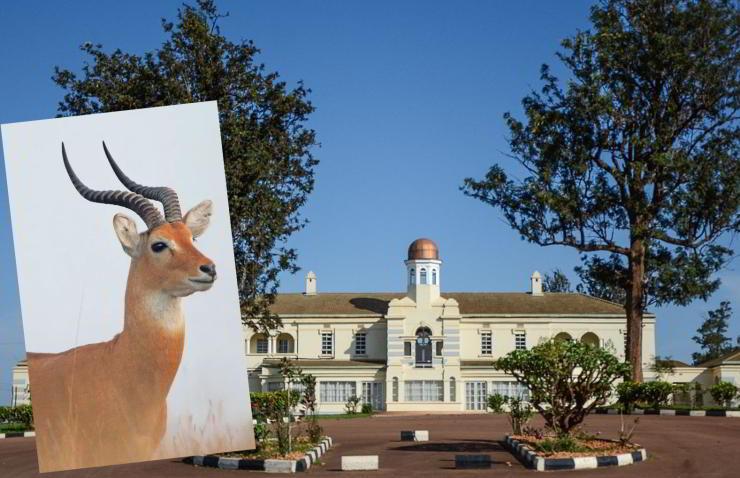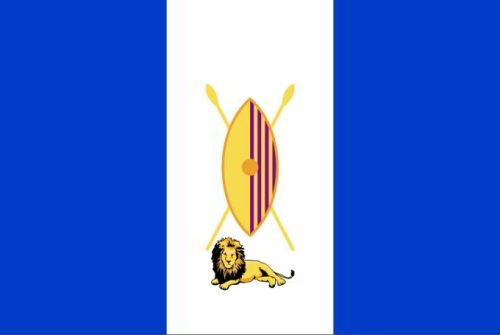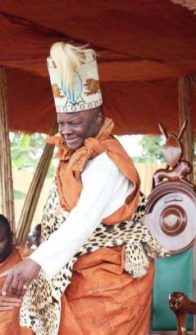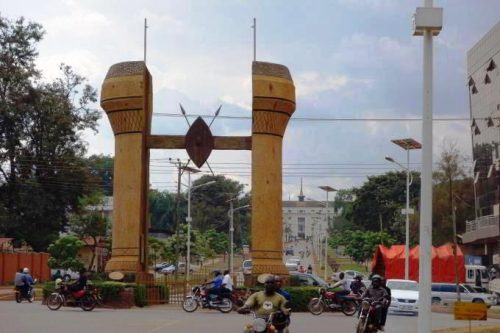Uganda. Ngabi Clan the King’s Massage Therapists and Herd’s men.

Buganda Kingdom is found in Central Uganda and it’s the largest and oldest traditional kingdom in Uganda today. This kingdom is made up of 52 clans that make up the tribe of the Baganda People. Each clan has roles and duties in the Kabaka’s Place. We look at the Ngabi clan.
The Ngabi (Antelope) Clan is one of the largest clans in the kingdom with 27 sigas (branches). The Ngabi clan is made up of both indigenous clans and clans that migrated to Buganda. The largest group was the Ngabi Nsamba. The myth surrounding the Ngabi Nsamba clan is that they were the lot who migrated from the Bunyoro kingdom. Their clan chief was a prince from the Bunyoro kingdom.
The Ngabi clan has many branches that became independent and some of them also came from Ankole and others from Busoga.
It’s believed that the Ngabi clan has a connection to the first king of Buganda Kintu, because Kimera was Kintu’s great-grandson. Kintu’s son Chwa succeeded him as a king and also got a son called Kalemera . It’s believed that King Chwa loved his son Kalemera so much and this always distracted him from his royal and official duties.

Flag of Kingdom of Buganda. Illustration: Mysid
Chwa was advised to send Kalemera away so that he could concentrate on his work. Indeed, Kalemera was sent away from the kingdom, he was accused of falling in love with one of the king’s wives and he was told to go to Bunyoro to work so that he could be able to pay up a fine or face the penalty. He left for Bunyoro where he stayed for a long time. While in Bunyoro, he fell in love with one of the wives of the Omukama (king) of Bunyoro known as Wanyana and Kimera was born. Meanwhile, Wanyana already had an elder son with the Omukama called Nsamba.
When Kimera decided to leave Bunyoro to return to Buganda he came with his half brother Nsamba Lubega Lunkonge. When Nsamba and Kimera and their entourage who by now belonged to the Ngabi clan arrived in Buganda from Bunyoro. Kimera was installed Kabaka (king) of Buganda, Kimera decided to install his half-brother Nsamba as the head of clan of the Ngabi clan ousting the Nansagwawo clan head Mutaawe who worked in the Kabaka’s palace was herding Kabaka Kintu’s cow Nsi go Nke (few seeds). So, the Ngabi Nsamba clan was created and it dominated all the other Ngabi clans forcing them to merge.
Kimera was the third kabaka (King) of Buganda. Being a member of the Ngabi clan makes members of the Ngabi clan royals (Balangira and Bambejja) because of their connection with King Kimera. Mutaawe remained the head of the Ngabi sub-clan.

Kabaka Ronald Edward Frederick Kimera Muwenda Mutebi II (born 13 April 1955) is King of the Kingdom of Buganda. He is the 36th Kabaka of Buganda. CC BY-SA 4.0/ Saidi Hussen
The lineage of the Ngabi clan was formed in such a way that Akasolya(top) is headed by Nsamba, Esiga (Branch) is headed by Mutaawe, omutuuba (a lower branch), then Lunyiriri (Lineage) and Lujja which is the compound or family of individuals of the Ngabi clan.
All these titles are hereditary in Buganda to date. All the other Ngabi clans found in Buganda joined Ngabi Nsamba through the lineage (Olunyiriri).
Another story also states that other clan members of Ngabi headed by Muntu came from Bwera Mawogola in Ankole.
When the Muntu group arrived in Buganda, they joined the Ngabi Nsamba. And other Ngabi members came with another group of people and their leader was Kasiita he was a mutaaka of Buyaaga Kyambalango, This group of Ngabi clan was called e’ngabi y’abasiita ( Ngabi of Basiita).
E’ngabi abeleki came from a man known as Lwekika Ngwando, Ngabi abakonga the founder of the abakongga county in Buddu
from a village called Banda.
There was also the branch of Ngabi that was called E’ngabi ennanzi ( Ngabi of Prophets) the people from this branch are referred to as abalanzi ( Prophets). They came from Bwamijja in Buddu, and another branch came from a man known as Kojja Mpiima he was the head of the clan of Ngabi in Kyagwe County, they were known as E’ngabi abagerere (Ngabi from Bugerere).The Ngabi people who came from the Eastern part of Buganda kingdom were known as Abayise Musoko they came from Lutembe or Ntembe from Jinja in Busoga and unlike the others, these people’s totem is a female antelope, they are only found in Bugerere and Kyagwe they also belong to Nsamba’s clan now. It’s known that each clan has a main totem and the second totem and for Ngabi people, their second totem is Jerengesa a creeping plant which the antelope feeds on.
The motto (Omubaala) of the Ngabi people is “ Tade Kadu” literary meaning ‘Kadu will not return’, Another of their mottos is “Kalikutanda neka twala mube ngabi abalwanyi”. Meaning ‘One should avoid meeting with fighters from the Ngabi clan’.The head of the Ngabi clan is known as Nsamba Lukonge and he lives in Buwanda in Mawokota.

The Buganda monument in Kampala. 123rf
Some of the male names given to babies from the Ngabi clan are Bukenya, Kasozi, Jjengo, Kabitto, Kamoga, Lubega, and Lubinga and female names given to girls of Ngabi clan are Nabukeera, Nakanwagi, Namuyiga and Namirimu,The major role of the clan members of Ngabi in the palace was to give massage therapy to the Kabaka if he had gotten a fracture or dislocation on his bones. This can only be treated by the people from Ngabi. They are also called Bakyondwa because their indigenous clan head Mutaawe Sekyondwa was taking care of Kabaka’s cow. Mutaawe is a title given to the Kabaka’s herd’s men
Whenever a new Kabaka of Buganda is installed, Mutaawe comes in with a decorated calabash which contains milk and gives it to a man titled Mpindi this man should only belong to the Lugave clan. Mpindi will take the calabash to the Kabaka, and hand it over telling the king, “This is from the herd’s man who takes care of your grandfather’s cow Nsi go nke,” Mpindi will give the milk to the Kabaka who will drink it in turn. The offspring of Nsi go nke still exist today and this ritual is still performed after the Kabaka’s coronation. (Open Photo:The Kabaka Palace in Kampala. CC BY-SA 3.0/ NatureDan)
Irene Lumunu



